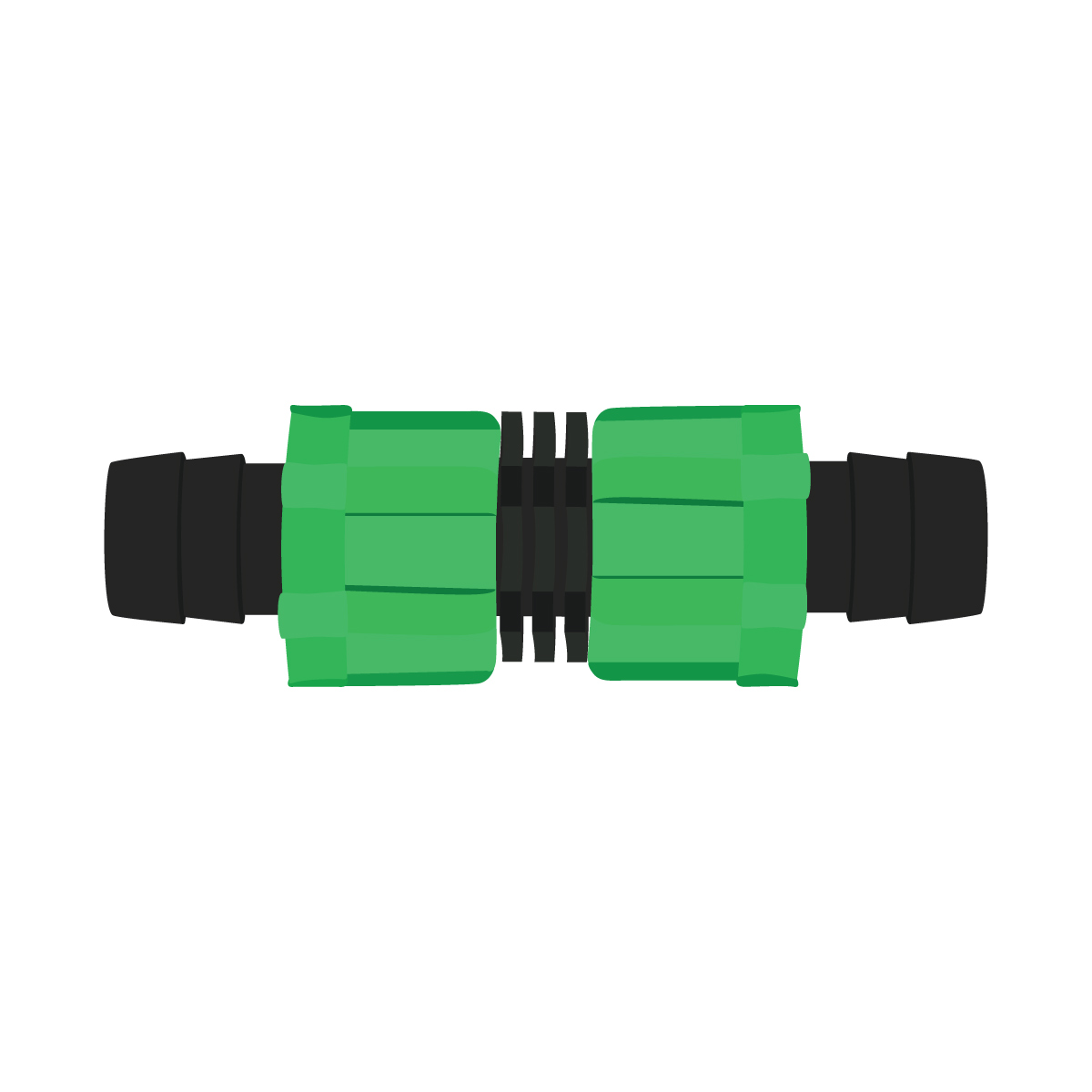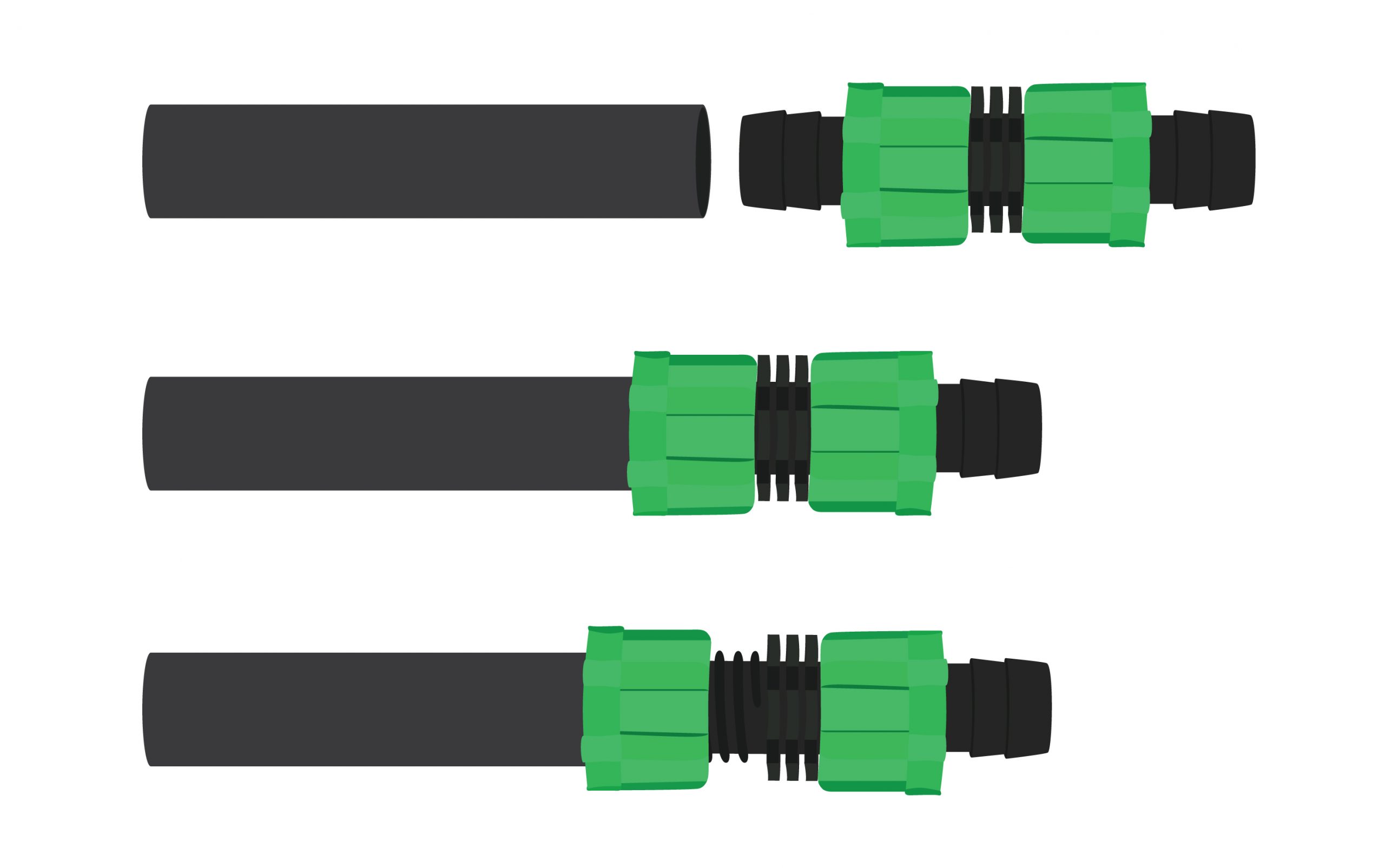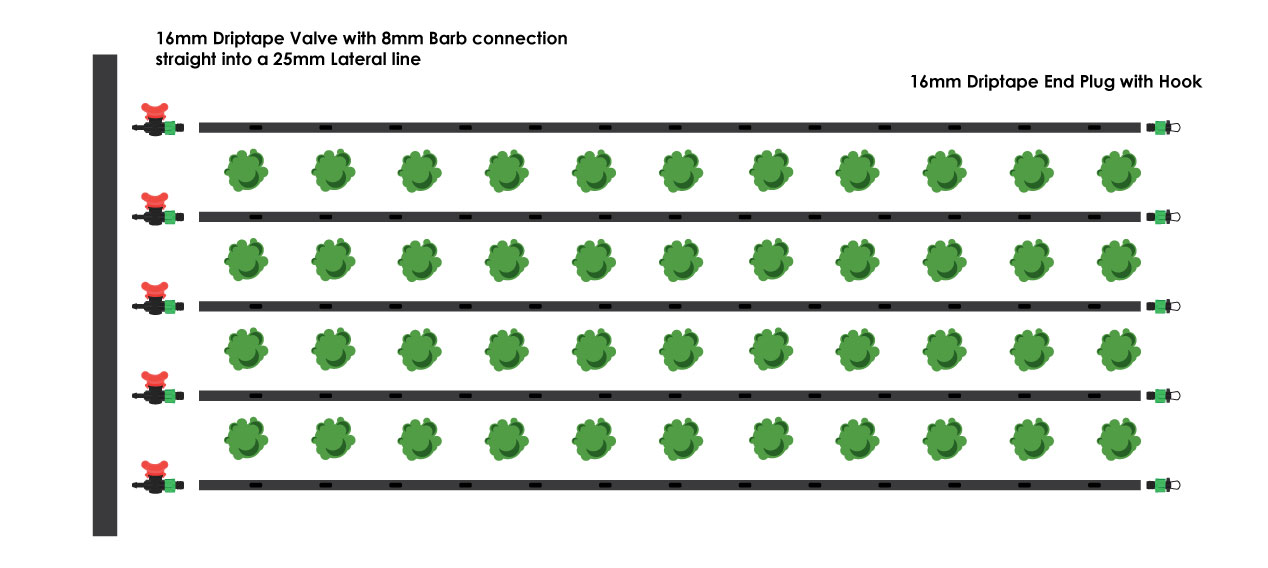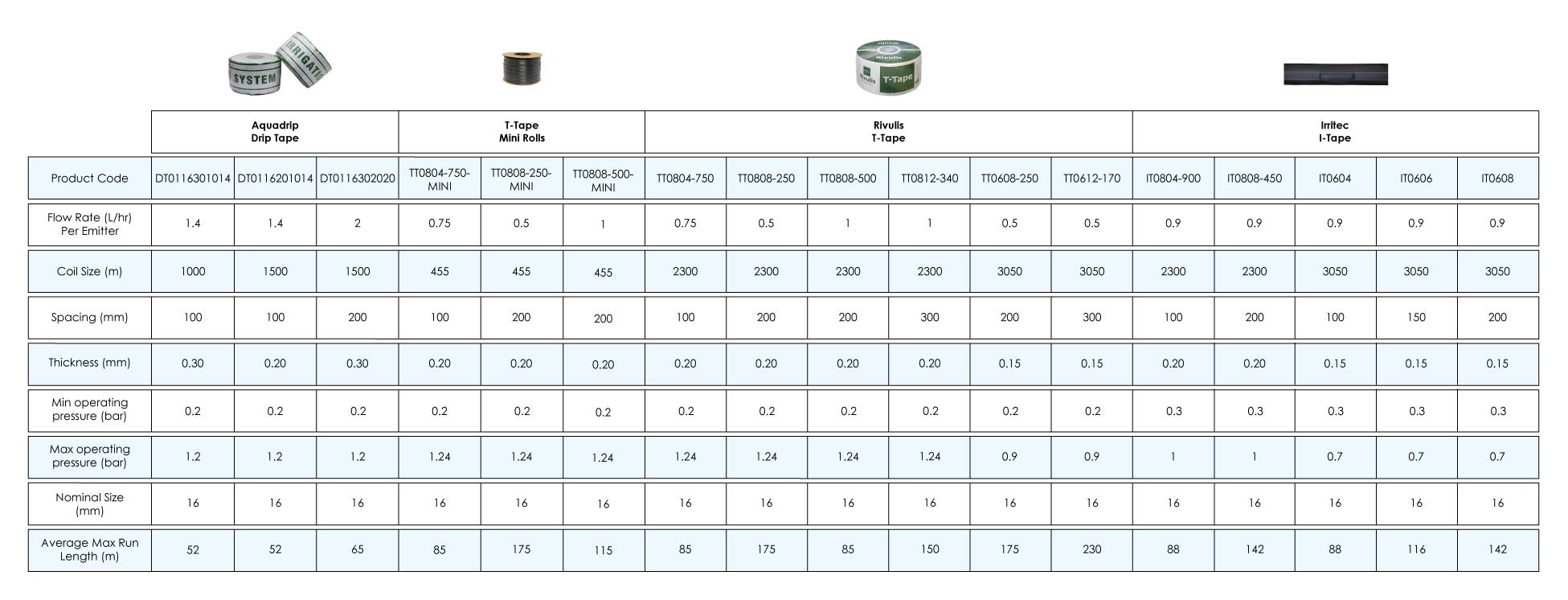What is Driptape and How Do I Use It?
Driptape is a pipeline with a dripper manufactured inside the pipeline. It is a thin-walled tube rather than a structure pipe, with the common wall-thickness being 0.2mm (8mil).
Commonly a seasonal product used in market gardens or rows of crops. The tape is low pressure and low flow system that has evenly spaced emitters built into the tubing.
Options to consider
- Flow Rate
- Pressure regulation
- Pipe Wall Thickness
- Filtration
What is Driptape?
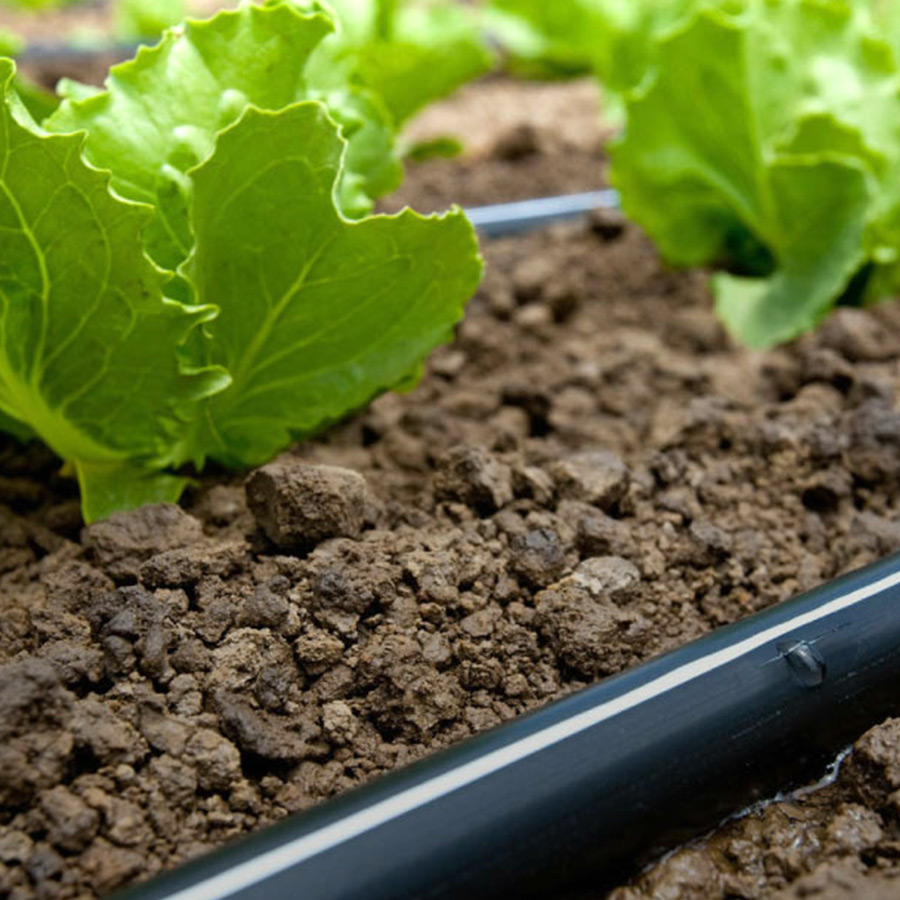
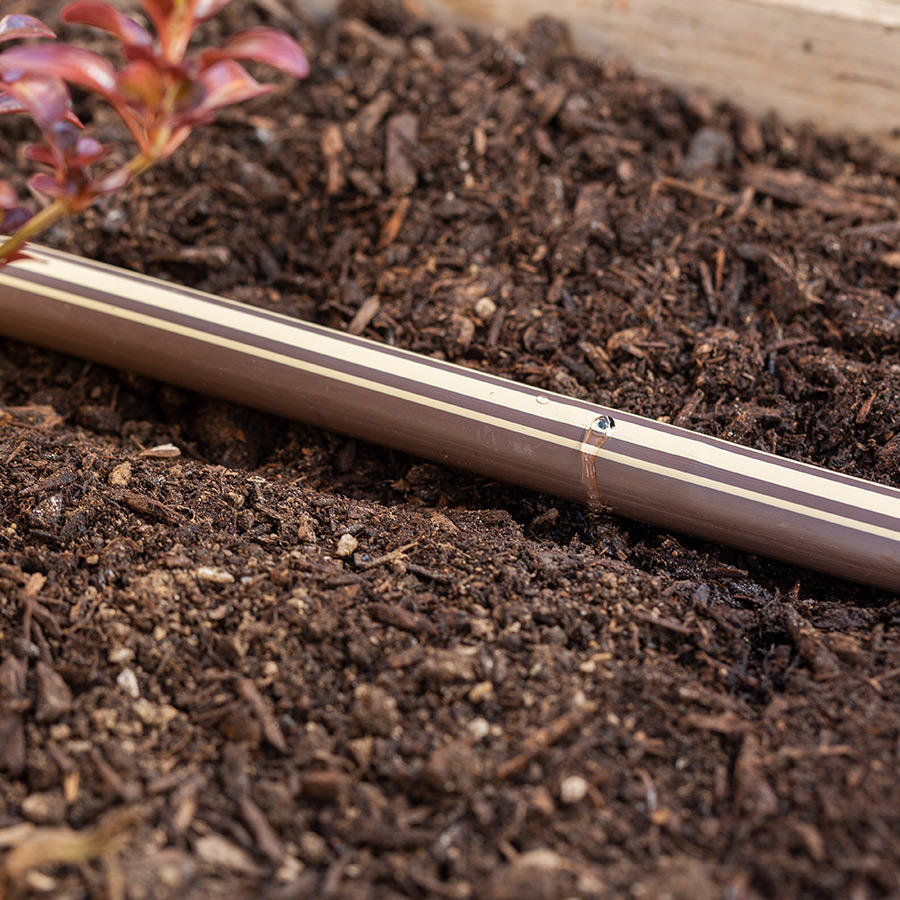
Drip Line vs Driptape
Dripline and Drip tape are commonly confused for one another in this industry. Both are fundamentally the same item, having drip emitters evenly spaced, built internally into the pipe. But they are drastically different in material and application.
Wall-Thickness
Driptape is a thin-walled tube/pipe, lying flat upon application, only enlarging once filled with water. Dripline is a structured pipe that is rigid, similar to the lateral pipe.
- Drip tape is a thin-walled pipeline with a common wall thickness of 0.15mm, 0.2mm and 0.3mm. In comparison to Drip Line which commonly has a wall thickness of 0.9mm to 1.2mm
Application
Drip tape is commonly used in short term crops and lasts between 1 to 5 years (depending on customer care). This is due to the thin wall pipe. Dripline can be used in short or long term crops and will last 10 to 30 years.
Due to the driptape lying flat when not irrigating, it allows for it to recoil when the season ends or for harvesting. Driptape comes in much larger coils between 1000m to 3000m. this allows for multiple applications for when rows deteriorate, you can easily run a new line from the coil supply. Dripline comes in 100m to 400m coils and can not be recoiled to store away easily.
Pressure
Drip tape operates at low flow and low pressure, approx 0.2 - 1.25 Bar (8 – 15 psi). Higher than the recommended will split either the tube or the fitting connection.
Dripline has either pressure compensated or non-compensated drip emitters that can have operating pressures varying from 15 psi to 60 psi.
What Drip Tape To Choose?
Drip tape comes in many different forms and is manufactured with different dripper flow rates, different spacings, and different wall thickness. There are also two types of diameters in drip tape, 16mm and 22mm. 16mm is the industry standard and mostly the one you will require.
To make your decision of which drip tape you require, you will need to consider these factors
- Water Supply
- Pressure
- Spacing and Length
Water Supply
You will need to understand your water supply for the drip tape and the flow rate available.
- Working from a pump, the performance flow chart gives you a good understanding of the max flow and pressure of the pump.
- This requires a bit more knowledge to understand
- Working off a tap, doing a bucket test gives you a good estimation of your flow rates.
- Working off the gravity feed system, you will have to do a bucket test, but the pressure is calculated by the height of the tank above the irrigation system.
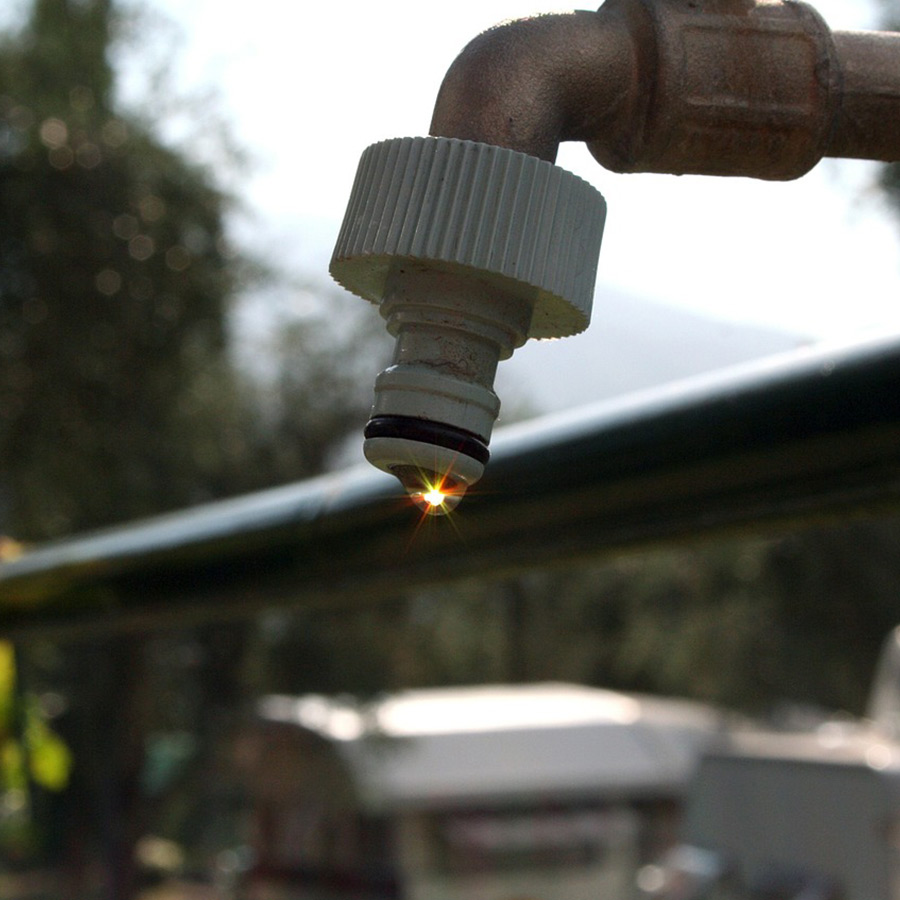
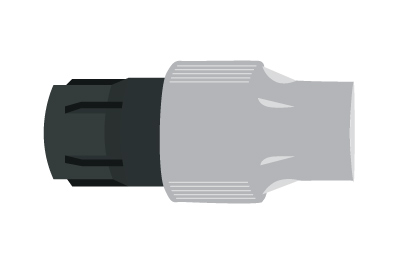
Pressure
Most situations you will need to have a pressure regulating valve in the system, ensuring it is between the recommended operating pressure of the driptape.
- An easy reminder for gravity feed systems is that
- 10 Meters of Height = 1 Bar of Pressure
- If your water tank feeding the system is 15m above the drip tape, it will have a pressure of 1.5 Bar.
Depending on pipeline size and whether the system is manual or automatically controlled, we recommend the Senninger Pressure Regulating Valve
If you have a larger pipe size, flow rates or very high pressure, you may need to go to a larger pressure regulating valve. Call our experts for advice.
Spacing and Length
A big factor in deciding the spacing of drip emitters is the plant spacing and the number of drippers you would like at each plant.
One, two or more drippers/rows of drippers, depends on how much of the root zone you would like to irrigate and how big that root zone is. Keep in mind that any rootzone not irrigated may come under stress during the dry periods.
The spacing of drip tape varies between 15cm, 20cm and 30cm. If your plants have a larger spacing you can go for the larger spaced emitters.
The length of the row is dependant on the size of the crop, but also plays a factor on how you irrigate with drip tape. Each variety of drip tape has a different max average run length.
For longer runs, it is better to have the supply line going to the middle and have the drip tape run both directions, instead of one long run.
Once you have decided the run length and dripper spacing. you can calculate the flow rate for the whole system. e.g. 15cm spacing x 65m row length x 1.5 L/hr per dripper. The flow rate per bed will be 10.8 L/min.
- 1m / 0.15 = 6.66 drippers per meter.
- 6.66 x 65m = 433.33 drippers per row
- 433.33 x 1.5 L/hr = 650 L/hr
- 650 L/hr / 60 = 10.8 L/min
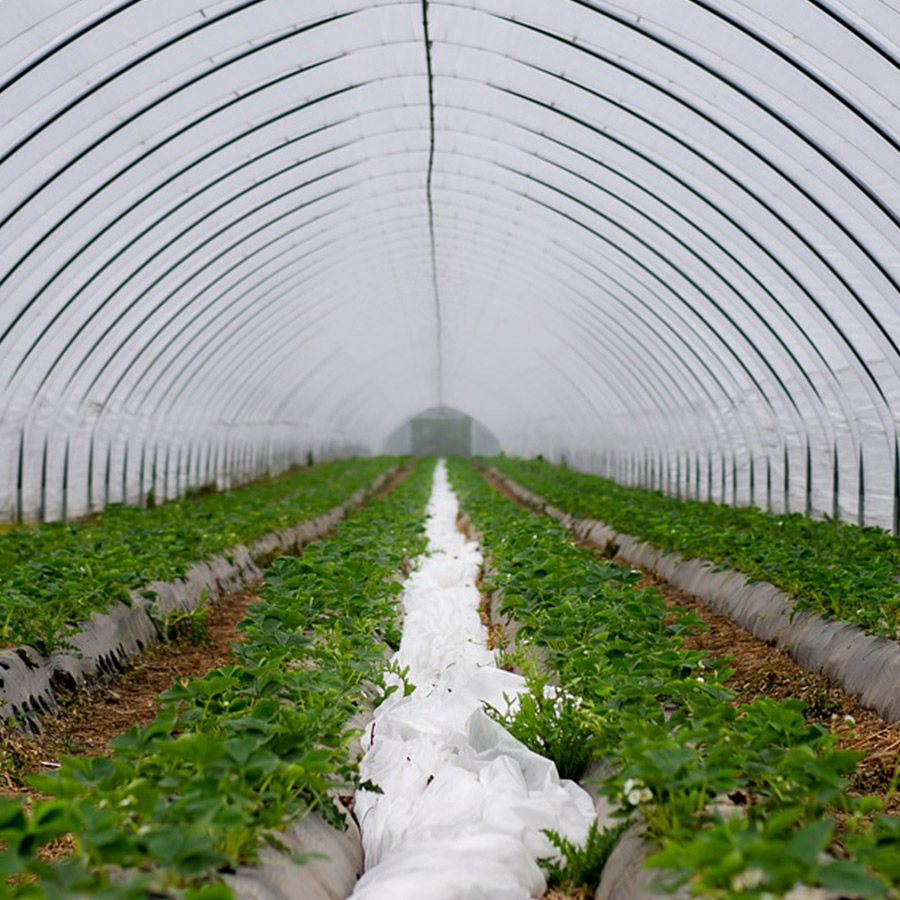
Using this information, you can have a better understanding of the type of driptape you may require.
- The number and length of rows will determine the size of the coil required.
- The plant spacing will determine the spacing of the drip emitters.
- The total number of drippers will help determine the total flow rate of each bed and therefore the system.
- This information coupled with the available water supply and pressure will help decide the emitters L/hr.
All of this will help decide on the pipeline and zoning of the system as discussed below, although this is more complicated and may take advice from experts.
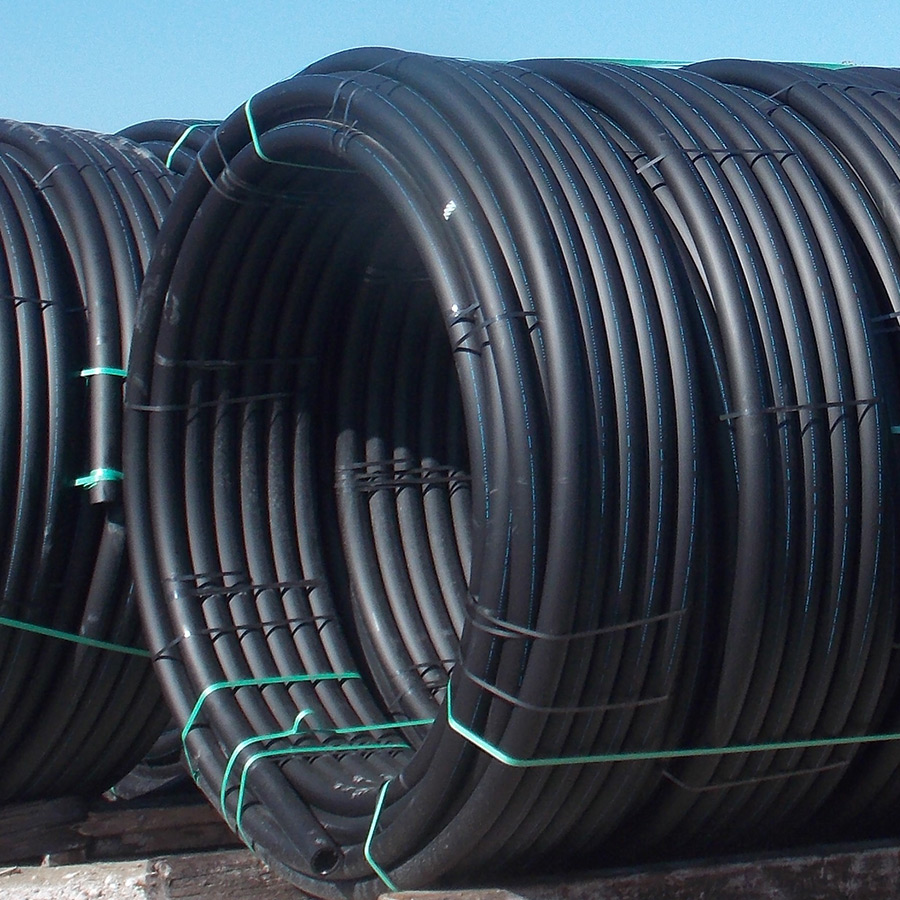
Pipeline and Zoning
DIY design for an orchard/market garden irrigation system is not recommended, call one of our designers and we can see how we can help. System design can be a simple calculation for small orchards, other bigger systems will need a full computer-aided design process.
Pipe head loss is a big factor often forgotten in irrigation systems. The size of your pipeline and flow rates required will produce a pressure loss due to the friction on the pipe. this can be easily calculated, but we will need to know the distance, pipe size and type (LDPE, MDPE, PVC) and the flow rate.
Supply lines in driptape systems are dictated by the water supply required and the distance needed to traverse. 25mm lateral pipe is commonly used as the sub-main line that the driptape fittings connect straight into via grommets.
Zoning is determined by the amount of water need to run the system and the amount of water available.
e.g. If you have 15 L/min water supply, with 5 beds each using 5 L/min, you have a system needing 25 L/min and only able to supply 15. to run the system efficiently you will have to break this system into 2 zones minimum, possibly 3 depending on the water source.
Filtration
Water quality and filtration are very important for drip irrigation systems. You always require good filtration for drip irrigation even if you have very good quality water. If you have poor quality water, we need to know a bit of detail on what is in the water to decide what filtration system will suit.
Most driptape systems require a minimum filtration of 130 Micron or 120 Mesh. A disc filter is very handy in this situation as it has a removable disc cartridge that can be cleaned and reused.
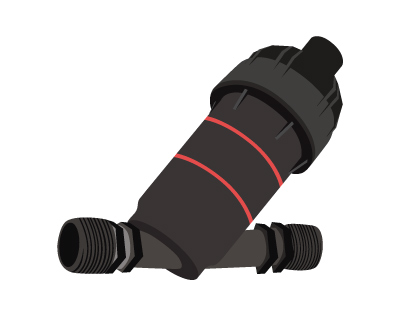
Fittings
Hand tighten the nut over top of the tape
